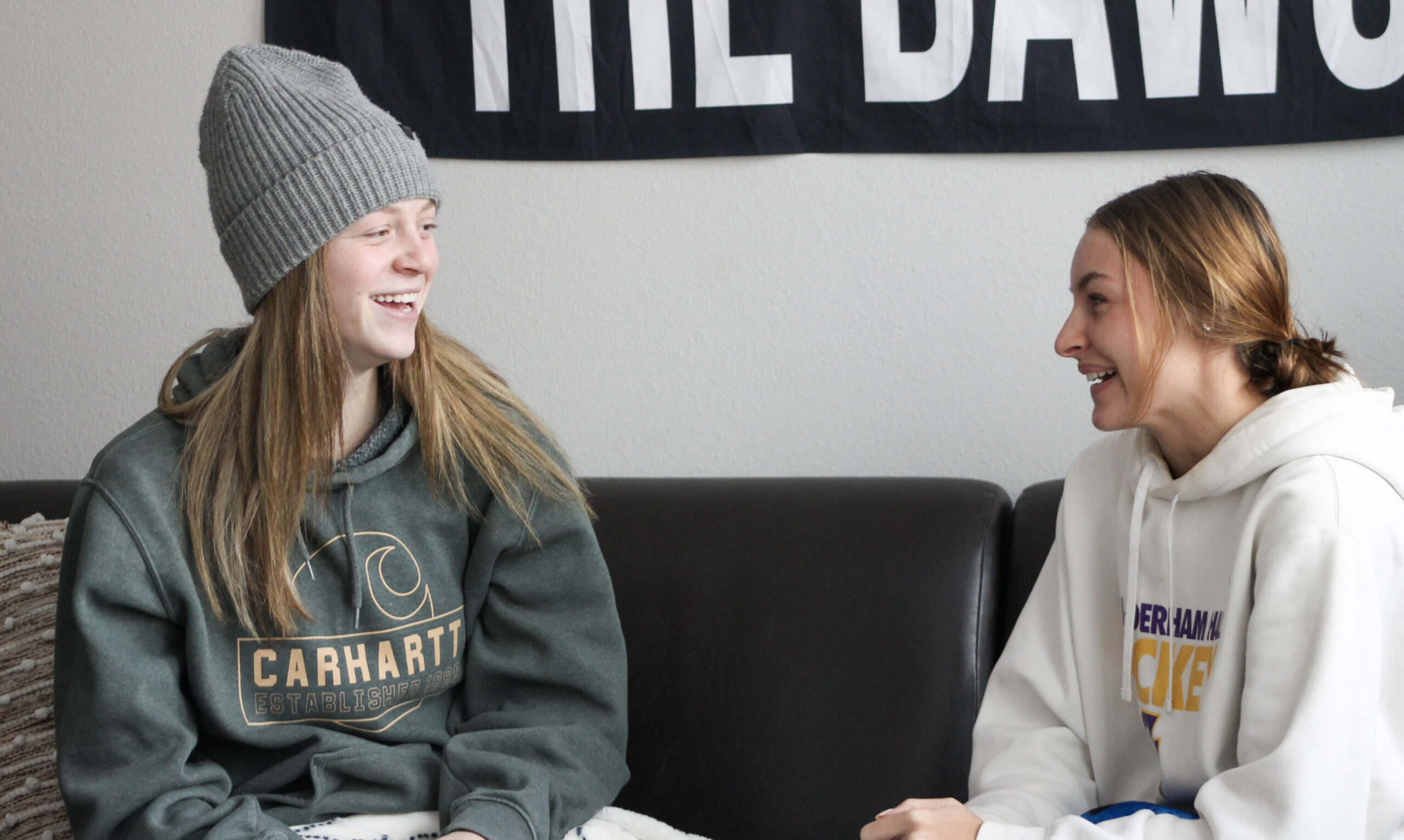Yappers in their natural habitat. Photo by Delaney Hudson.
ANNA GRITZENBACH | OPINION COLUMNIST | agritzenbach@butler.edu
Yapping. It’s everywhere. In class, at Starbucks, family gatherings, work — I could go on and on.
Yapping is an umbrella term for talking with seemingly no meaning, prompt or goal: word vomiting if you will. Yapping is entirely different from conversation, which is more two-sided, often changing as each person contributes new ideas to the discussion. Yapping, on the other hand, is a one-sided, non-stop flow of words.
I am guilty of adding to this noise; I just can’t help it. It’s fun to be a yapper.
Sophomore strategic communication major Sam Waldrop highlights how fun it is to connect with people, especially conversationally.
“Oh yeah, I’m a huge chatterbox,” Waldrop said. “I like creating conversations, and I like being social with people.”
At the end of the day, especially as college students, it’s nice to talk with no structure. Between classes, clubs or work, it feels as though we are always under pressure to speak with purpose.
After a long day, a yap sesh is exactly what I need. When you are with those you are comfortable with, especially friends, venting can be very beneficial.
Cate Pugliese, a sophomore criminology-sociology major, sheds some light on how yapping is beneficial to her.
“I think it’s fun to yap with friends,” Pugliese said. “It can be a bonding thing also, depending on what you yap about.”
When you’re in the comfort of companionship and familiarity, it’s easy to unload every minuscule detail you experience — no matter how mundane — which can be incredibly amusing for both parties. Yapping to your friends can also be a great way to talk about the low points of your day, serving as an unintentional bonding exercise.
Though there is an aspect of entertainment and friendship, one of the most common instances I encounter yapping is in social settings where the conversation has faltered. We all forget that silence is also a part of the conversation, not the end. It would make perfect sense if the only reason people yap is because they enjoy it, but that’s not the case. People ramble on because they are uncomfortable with silence.
Purposeful quiet can be off putting. It instills a strong sense of anxiety in me, making me feel like I am failing at being social.
Waldrop talks about the importance of silence, despite the negative emotions that may arise with it.
“Although I don’t like [silence], I don’t think it’s a bad thing,” Waldrop said. “I think silence can be needed.”
The discomfort associated with silence is a learned behavior that has been ingrained in us humans, especially Gen Z and younger. Between social media, video games, television and our expansive access to music, we are almost always being stimulated.
Whether it’s background noise when studying, scrolling through social media while watching a movie or those Subway Surfer Reddit storytimes on TikTok that I know you all watch, we almost always need two forms of entertainment in our day-to-day lives. Because we have become so accustomed to this stimulation, we require it in social situations as well, becoming quite uncomfortable when nothing is happening.
Tatiana Pereda, a senior biochemistry and Spanish double major, attributes this discomfort to our humanity.
“Yapping is just a part of the human experience,” Pereda said. “It’s a part of us that’s uncomfortable, and being uncomfortable is being human, so I don’t think yapping’s ever gonna go away.”
Now, I’m not writing this article to tell everyone to stop yapping. In fact, I don’t think we should stop, but we do need to learn how to communicate mindfully.
Silence is uncomfortable — I get that. However, silence isn’t bad; it’s quite important. If we don’t start learning how to be comfortably silent, our conversations will turn into just noise. By familiarizing ourselves with mindful communication practices, some of the unnecessary yapping will stop, leaving us with more room to connect with purpose.
Though this may seem inherently contradictory, mindful yapping is good.
If we stopped yapping altogether, what would I do in my therapy appointments?
There is a time and place for yapping, and therapy is one of those places. But, it seems as though we have forgotten our situational awareness and control, yapping any time and anywhere. A big part of mindful communication is being present and listening to what you, your brain and your body have to say.
For me, being presently and situationally aware of both my emotions and perceptions is picture-perfect mindful communication. This also looks like starting conversations that you have something of substance to add to or learn from.
For Pugliese, communicating mindfully looks a little different.
“When I think of yapping, I think of [the conversation happening] all [in] one breath,” Pugliese said. “So, I think pausing and showing that you’re actively listening and thinking about what you’re saying [is important].”
Active listening and thoughtful responses to remarks make people feel heard, and at the end of the day, that’s all any of us want. In a world governed by technology, media and overall noise, we all just want a place where we can voice our opinions, experiences and emotions — mindful yapping is a wonderful way to achieve that.
But, please remember: think before you yap, and don’t yap before you think!




Pingback: The art of yapping: Everyone is the artist - Ella Harris News